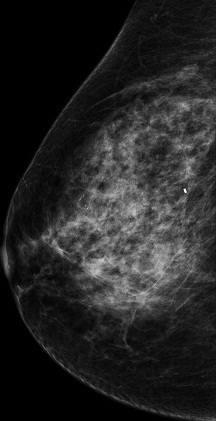Breast cancer risk prediction using AI has accuracy of 99 percent
by
Christina Hwang, Contributing Reporter | September 07, 2016

Courtesy: Houston Methodist
Artificial intelligence (AI) for breast cancer risk prediction has an unprecedented accuracy of 99 percent, at 30 times a radiologist’s interpretation speed, a study from Methodist Hospital has shown.
The researchers, led by Dr. Stephen T. Wong, Ph.D., P.E., chair of the department of systems medicine and bioengineering at Houston Methodist Research Institute, and Dr. Jenny C. Chang, director of the Houston Methodist Cancer Center, developed the Methodist Hospital Text Teaser (MOTTE), an AI software based on natural language processing (NLP) and machine learning algorithms.
Prior to the study, the researchers used the Methodist Environment for Translational Enhancement and Outcomes Research (METEOR) database to determine the patients with Breast Imaging Report and Data System (BI-RADS) category 5 mammogram readings, and the AI was then used to obtain information on the patients who met the study’s criteria.
MOTTE evaluated 543 mammograms and pathology reports where it looked for factors including cancer types and previously recorded cancer types, as well as breast density, mammogram mass, and calcifications. The clinicians then used the results from MOTTE to predict each patient’s likelihood of being diagnosed with breast cancer.
“The results of the current study validate previously reported trends assessed by manual data collection,” said Wong. “In this reported study on BioRADS-5, we achieved 99% accuracy compared to manual data interpretation by expert clinicians but with more than 30 times faster in interpretation.”
“This software intelligently reviews millions of records in a short amount of time, enabling us to determine breast cancer risk more efficiently using a patient's mammogram,” Wong said.
Manual review of 50 charts took two clinicians 50 to 70 hours to read, while the AI reviewed 500 charts in a few hours. “Accurate review of this many charts would be practically impossible without AI,” said Wong.
When mammograms look suspicious, patients are recommended to have a biopsy, and according to the American Cancer Society, over 1.6 million breast biopsies are performed every year with about 20 percent of them being unnecessary.
Wong said that relying only on computer aided detection (CAD) results is inadequate, which is seen with the over-diagnoses of breast cancer and unnecessary biopsies. He said that imaging information needs to be fused with free text and other clinical information to form a more accurate risk assessment.
Currently, the researchers are integrating quantitative imaging information from imaging modalities other than mammograms to see if the inclusion of these modalities with AI software would further improve the accuracy of breast cancer diagnoses.
“This new study is more research-oriented, as most breast examinations may not have MRI, ultrasounds, or both. However, we would like to know whether adding more breast imaging modalities will actually improve the breast cancer diagnosis or not,” Wong said.
He notes that the software can be applied to other cancer diagnoses and risk assessments and can also incorporate other information such as genomics, imaging, and lab tests.
|
|
|
You Must Be Logged In To Post A Comment
|
